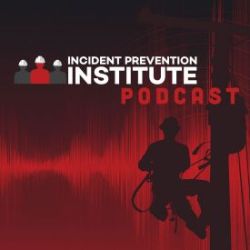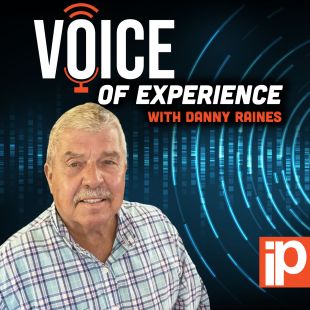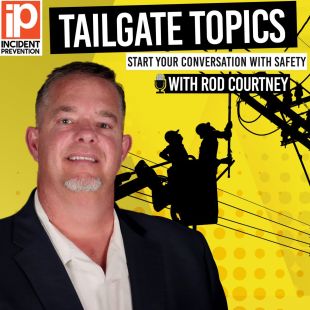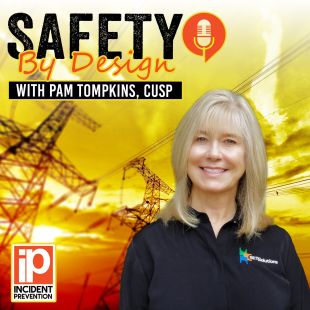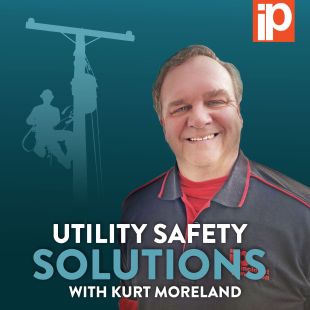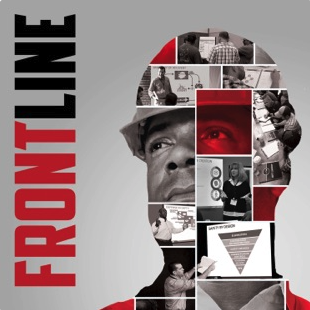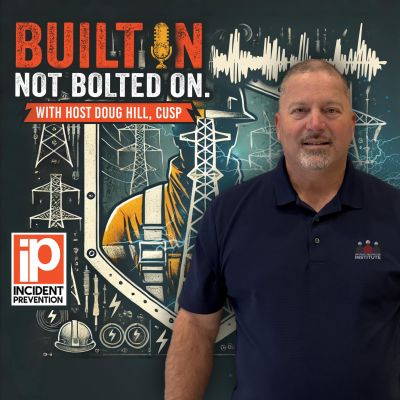
Built In, Not Bolted On Podcast – Doug Hill, CUSP
Doug Hill is a retired line worker and Safety Culture/HOP Champion with nearly 40 years of experience in the utility industry. For the last 12 years, he represented the MSUWC in Electric Operations Safety, advocating for safer workplaces and stronger safety cultures. Doug attended Northwood University and New Charter University, earning a bachelor’s degree in business administration.
He is highly respected in the utility industry for his expertise in Safety Culture and Human & Organizational Performance (HOP). His influence extends through keynote presentations, educational sessions at utility conferences, and published articles in IP Magazine, Culture Corner, and more. Doug has also been a featured guest on multiple safety-focused podcasts, including IP, Safety Spectrum, and The Jay Allen Show, where he shares insights on safety leadership and HOP principles.
He resides in Michigan with his high school sweetheart, Stacey, and together they have three daughters and two granddaughters.
PODCASTS BY INTERVIEWER
Built In, Not Bolted On Podcasts
Built In, Not Bolted On with Doug Hill, CUSP – Rethinking Job Briefs – Why the End of the Day Matters Most
In this episode of Built In, Not Bolted On, host Doug Hill challenges traditional thinking around job safety practices. He explores the effectiveness of pre-job briefs, mid-day check-ins, and post-job reviews, emphasizing how learning from experience—especially at the end of the day—can dramatically improve safety outcomes. Drawing inspiration from aviation and military after-action reviews, Doug outlines how three simple questions can spark a culture of continuous improvement and safer work environments.
✅ Key Takeaways
-
Pre-job briefs are essential—but post-job briefs may hold even more value in fostering continuous improvement.
-
A “mid-day check-in” helps adjust controls based on changing conditions like weather or job scope.
-
Successes should be analyzed as deeply as failures to uncover replicable best practices.
-
Three core post-job questions—What went well? What didn’t? What can we learn?—drive future safety improvements.
-
Brief, honest conversations at the end of the day can improve the next day’s job planning significantly.
Q1: Why is the post-job brief considered more valuable than the pre-job brief by aviation professionals?
A1: Because post-job briefs provide real-time insights and lessons learned from completed tasks, which shape better, more informed pre-job briefs the following day.
Q2: What are the three questions Doug recommends asking during a post-job brief?
A2: 1) What went well? 2) What didn’t go well? 3) What can we learn to improve for the future?
Subscribe to Incident Prevention Magazine – https://incident-prevention.com/subscribe-now/
Register for the iP Utility Safety Conference & Expo – https://utilitysafetyconference.com/
#UtilitySafety #SafetyCulture #AfterActionReview #WorkplaceSafety #JobBriefing #ContinuousImprovement
Built In, Not Bolted On with Doug Hill, CUSP – Why Safety Programs Succeed or Fail David McPeak, CUSP
In this episode of Built In, Not Bolted On, host Doug Hill sits down with safety leader and educator David McPeak to explore the real keys to successful Human and Organizational Performance (HOP). Through storytelling, relatable analogies, and a few laughs, they break down the power of caring leadership, building a just culture, the dangers of overcomplicating safety systems, and the importance of embedding safety into the DNA of an organization. From tools like “E + R = O” to the “village-by-village” model of influence, this episode provides a practical, people-first look at how to make safety initiatives stick—for good.
Key Takeaways:
-
Culture eats strategy for breakfast. Safety systems must be embedded into the culture—not simply bolted on as compliance requirements.
-
Toxic culture is a showstopper. No safety program will succeed in an environment that lacks trust, respect, and accountability.
-
Success starts with relationships. Building strong, caring teams helps create the psychological safety needed to speak up and improve performance.
-
Don’t overcomplicate safety. Practical, repeatable tools that workers understand and use in context matter more than complex policies.
-
Peer-level champions and simple tools like “E + R = O” and performance mode awareness can drive real change from the ground up.
5 Relevant Questions & Answers:
Q1: What’s the key to implementing effective Human and Organizational Performance (HOP) strategies?
A1: Commitment and time. It’s not about quick fixes—it’s about embedding care, consistency, and communication into every level of the organization.
Q2: Why do many safety programs fail?
A2: They’re often implemented in toxic cultures or made too complex. Without foundational trust and simple, relatable tools, programs won’t stick.
Q3: How can you tell if a safety initiative is “built in” versus “bolted on”?
A3: “Built-in” programs are part of daily work, language, and habits. “Bolted-on” programs feel forced, top-down, and are quickly abandoned.
Q4: What role do performance modes play in safety?
A4: Understanding if a worker is in skill-, rule-, or knowledge-based mode helps choose the right tool—like saying it out loud, step-by-step checks, or stopping work to seek help.
Q5: How can leaders support cultural safety transformation?
A5: By modeling desired behaviors, creating a safe space for feedback, understanding how each role sees safety, and helping translate tools into all departments—not just field crews.
#BuiltInNotBoltedOn #UtilitySafety #HumanPerformance #SafetyCulture
#OrganizationalLeadership #JustCulture
Contact Doug: doug@utilitybusinessmedia.com
Subscribe to Incident Prevention Magazine – https://incident-prevention.com/subscribe-now/
Register for the iP Utility Safety Conference & Expo – https://utilitysafetyconference.com/
Built In, Not Bolted On with Doug Hill, CUSP – Protecting Our Workforce Through Safety Culture
In this episode of Built In, Not Bolted On with host Doug Hill, CUSP, we dive deep into the world of utility safety culture, exploring the latest risk management strategies, regulatory challenges, and best practices to keep crews safe. Our host shares firsthand experiences and expert insights on hazard identification, compliance updates, and leadership in safety culture. Whether you’re in line work, transmission, or distribution, this episode is packed with valuable takeaways to help you enhance workplace safety and efficiency.
Contact Doug: doug@utilitybusinessmedia.com
Subscribe to Incident Prevention Magazine – https://incident-prevention.com/subscribe-now/
Register for the iP Utility Safety Conference & Expo – https://utilitysafetyconference.com/
Key Takeaways:
•Risk Mitigation Strategies – How to proactively identify and address workplace hazards.
•Compliance & Regulations – Updates on industry standards and their impact on daily operations.
•Technology & Safety – The role of innovative tools in improving worker protection.
•Leadership in Safety – Why management commitment is crucial for fostering a strong safety culture.
•Lessons from the Field – Real-world scenarios that highlight best practices and potential pitfalls.
Five Relevant Questions & Answers from the Podcast:
1.Q: What are the biggest safety challenges facing the utility industry today?
A: The biggest challenges include hazard identification, ensuring compliance with evolving regulations, and integrating new technology while maintaining worker safety.
2.Q: How can companies improve their safety culture?
A: Companies must prioritize training, encourage open communication, and lead by example to create an environment where safety is a shared responsibility.
3.Q: What role does technology play in utility safety?
A: Innovations like wearable safety devices, AI-driven monitoring, and automated reporting systems are enhancing how companies manage risks.
4.Q: How do changing regulations impact utility workers?
A: New safety laws require continuous education and adaptation, ensuring workers stay compliant and protected in evolving work environments.
5.Q: What is one key piece of advice for improving safety in the field?
A: Always prioritize situational awareness, follow protocols, and never hesitate to speak up about potential hazards.
#UtilitySafety #WorkplaceSafety #LinemanLife #RiskManagement #SafetyCulture #OSHACompliance #PowerGrid #ElectricalSafety
Do you have insight to share with the utility safety community?
Contact us with your podcast topic and 2-3 learning objectives to be considered for our next podcast episode.
